The Life of a Sea Turtle Rehab Tech
People have doctors and nurses; sea turtles have veterinarians and rehab technicians. Our rehab techs perform all of the day to day care of our sea turtles: including feeding, wound care, medications, and rescues. Most of our rehab staff have degrees in Marine Science, Biology, or Environmental Science. They’ve received on the job training, as sea turtle rehab is not typically taught in college. We had a chance to speak to one of our rehabbers to get her take:
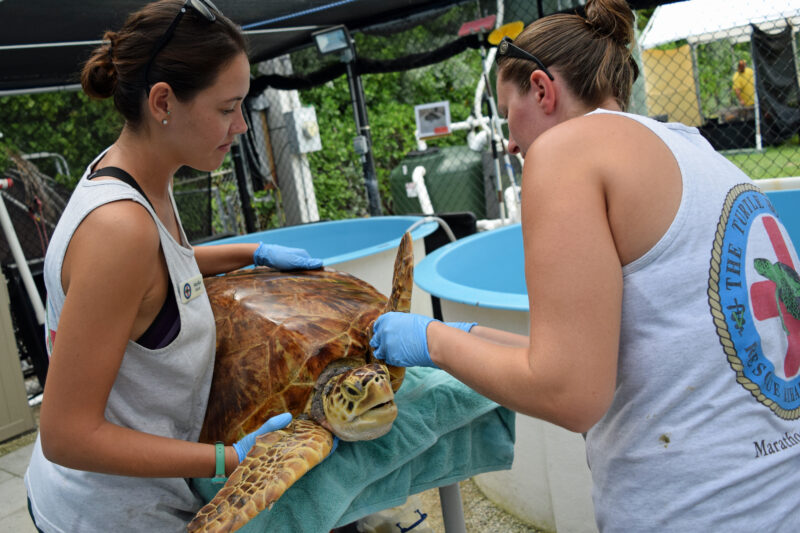
Marika is an Rehabilitation Specialist who has been working at The Turtle Hospital for three and a half years. She helps rescue, rehabilitate, and release sea turtles and collaborate on the research into different issues related with sea turtles. She started out as an intern at Mote Marine Lab in Sarasota before coming to the Keys.
One normal day involves: getting all the supplies from the hospital to the rehabilitation area and feeding the turtles with lettuce, fish, squid, and special diets with medicine for the turtles that are sick, debilitated, and lethargic. While she is cleaning the tanks, some turtles have to be brushed on their shell. The sea turtles love to be scratched on the carapace! Observing the turtle’s behavior is a very important job.
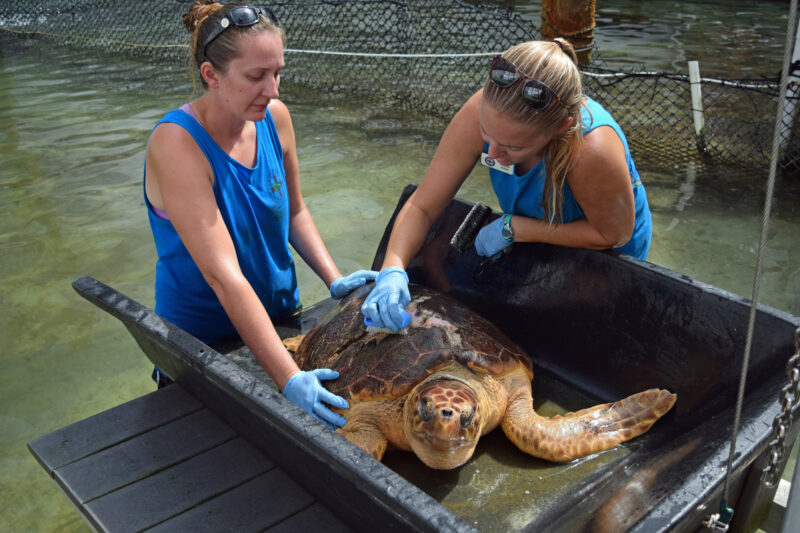
If someone calls the hotline to report a stranded turtle, Marika or another rehabber has to obtain information about the location of the turtle, size, problem (entanglement, fish hook, boat strike, etc). She must get the appropriate equipment like a net, bins, kiddie pool and first aid supplies and put it all inside the unique ambulance. Sometimes it is easy to get the turtles from the water or the beach because they are floating. But other times it is hard because the rehabbers have to coordinate with the other agencies. First, they must obtain the geographic coordinates. If the turtle is far away in the ocean, they work with FWCC or Coast Guard to get the turtle to land and to the ambulance to bring the turtle to the hospital.
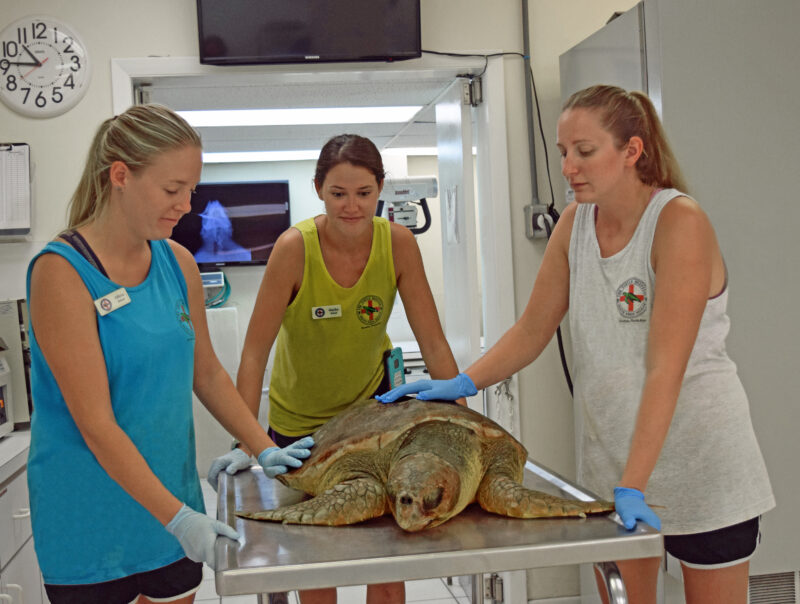
Surgery is not easy either. While the veterinarians are the ones to perform the surgeries, our rehab techs prep the turtles beforehand and assist during. Marika has to transport the turtles from our rehab tanks to the surgery room. And if it is big, 310 pounds, for example, she will need help to lift it. The rehabbers use a golf cart to move the turtle from the tanks to the hospital. After the turtle is moved, she washes the turtle, gathers information from the turtle’s file, updates records, does blood work, and stabilizes the shell if the turtle has damage on the carapace. She assists the doctor inside the surgery room: holding the instruments, the endoscope, running the anesthesia, and helping the turtle breathe.
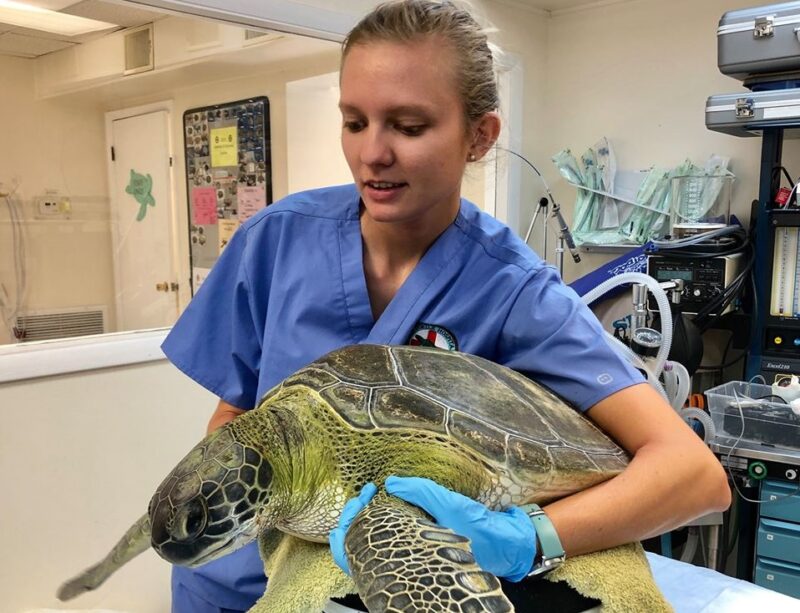
Releasing turtles is the best part of the job for rehabbers like Marika. When the doctors say the turtles are healthy and ready, they will have a special day and location for the release. It is hard to be rehabber, not just physically but mentally and emotionally. Especially when they have to spend many years caring for the turtles and they become emotionally attached to these beautiful creatures and then they have to let them go. But the best moment is when they see turtles free and returning to the ocean. Just like Marika, all the rehabbers are our heroes even though it is hard to be a Rehabilitation Specialist.
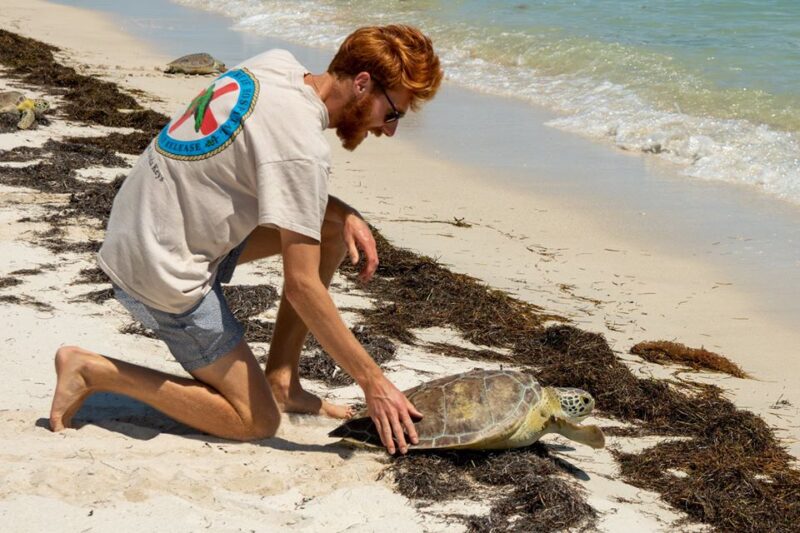
Comments are closed.


